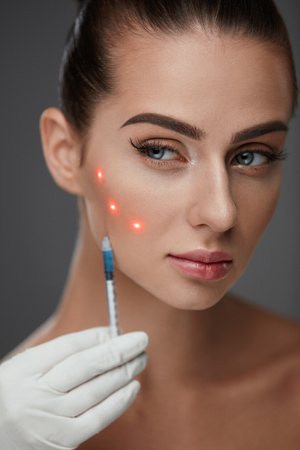Introduction to Facial Volume Restoration
Facial volume loss is a natural aspect of the ageing process, often manifesting as sagging skin, hollowed cheeks, and deepening lines. This phenomenon is largely attributed to the gradual depletion of subcutaneous fat, collagen, and bone density over time. In the UK, these visible signs of ageing can have a significant psychological impact, influencing both self-confidence and perceived vitality. As British society becomes increasingly attuned to aesthetic enhancements and personal wellness trends, there has been a marked rise in demand for facial volume restoration treatments. The pursuit of a rejuvenated, natural appearance—while maintaining subtlety and authenticity—has led individuals to explore both non-surgical and surgical solutions. This growing interest reflects not only advances in medical aesthetics but also shifting cultural attitudes towards proactive ageing and self-care within the UK context.
2. Non-Surgical Options: Techniques and Popularity
Non-surgical facial volume restoration has rapidly gained traction in the UK, appealing to individuals seeking subtle enhancement without the downtime associated with surgical procedures. The most prevalent non-surgical interventions are dermal fillers, which utilise biocompatible substances to restore lost volume, contour facial features, and soften lines. These treatments can be tailored to the unique needs of each patient, making them a popular choice across various age groups.
Mechanisms of Action
Dermal fillers primarily function by replenishing hyaluronic acid (HA), a naturally occurring substance that diminishes with age. HA-based fillers absorb water and expand under the skin, providing immediate volumisation and hydration. Other options include calcium hydroxylapatite and poly-L-lactic acid fillers, which stimulate collagen production for longer-lasting results. The application is minimally invasive, typically requiring only topical anaesthesia and resulting in minimal recovery time.
Common Products Used in the UK
| Product Name | Main Ingredient | Indications | Typical Duration |
|---|---|---|---|
| Juvéderm | Hyaluronic Acid | Lips, cheeks, nasolabial folds | 6-18 months |
| Restylane | Hyaluronic Acid | Tear troughs, midface, hands | 6-12 months |
| Radiesse | Calcium Hydroxylapatite | Cheeks, jawline, chin augmentation | 12-18 months |
| Sculptra | Poly-L-lactic Acid | Deep facial volume loss | Up to 24 months (after series) |
Trends Specific to the UK Market
The UK aesthetics sector has witnessed a surge in demand for natural-looking enhancements. British clients tend to favour understated results, prioritising subtle contouring over dramatic transformations. This is reflected in the popularity of “tweakments”—small-scale adjustments that refresh the face while maintaining authenticity. Regulatory oversight in the UK also ensures high standards of safety and efficacy for non-surgical products and practitioners. Furthermore, there is an increasing preference for practitioners who are medically qualified, such as GMC-registered doctors or NMC-registered nurses.
Cultural Considerations and Patient Preferences
The British approach to cosmetic interventions is typically conservative. Many seek preventative treatments in their late twenties or early thirties, focusing on preservation rather than reversal of ageing signs. Clinics often offer complimentary consultations to educate clients about product choices and realistic expectations, reflecting the UK’s emphasis on informed consent and patient-centred care.
![]()
3. Surgical Approaches: Procedures and Patient Suitability
Surgical facial volume restoration remains a robust option for individuals seeking long-term, transformative results. In the UK, two primary surgical techniques dominate this landscape: autologous fat grafting and the use of facial implants. Each method has evolved significantly in recent years, reflecting both technological advancements and the changing expectations of British patients.
Fat Grafting: Technique and Trends
Autologous fat grafting involves harvesting fat from one part of the patient’s body, purifying it, and then meticulously injecting it into areas of the face that have experienced volume loss. This approach appeals to those who prefer using their own tissue rather than synthetic materials—a trend gaining traction among UK patients conscious of biocompatibility and natural outcomes. Innovations such as micro-fat and nano-fat techniques have improved both graft survival rates and the subtlety of results, making this procedure increasingly popular with those desiring a softer, more rejuvenated appearance.
Facial Implants: Structure and Longevity
For patients seeking more pronounced structural changes—particularly in the cheeks, chin, or jawline—facial implants offer a predictable, lasting solution. Modern implant materials are safer and better contoured than ever before, catering to the UK’s high standards for safety and aesthetics. Implant procedures typically appeal to those with significant congenital deficiencies or age-related bone resorption who desire a sharper or more defined facial profile. The permanence of implants can be attractive but also requires careful preoperative planning to align with patient expectations.
Patient Profiles and Suitability in the UK Context
The typical surgical candidate in the UK tends to be older than those opting for non-surgical solutions—often individuals who have already explored temporary fillers or other less invasive treatments. They may present with more advanced volume loss or skeletal changes that cannot be adequately addressed non-surgically. Candidacy is carefully assessed with thorough medical screening, considering not only aesthetic goals but also overall health, lifestyle factors, and potential downtime associated with surgery.
Considerations Unique to UK Patients
From a British perspective, decision-making around surgical facial volume restoration is heavily influenced by NHS guidelines, private healthcare availability, and prevailing attitudes towards cosmetic surgery. There is a strong emphasis on evidence-based practice, transparency about risks versus benefits, and a growing interest in ‘natural-looking’ enhancements rather than overt transformation. Moreover, regulatory oversight ensures that only qualified surgeons perform these procedures, providing reassurance to patients navigating their options in an evolving market.
4. Comparative Effectiveness and Results
When evaluating facial volume restoration, the distinction between non-surgical and surgical interventions in the UK is best understood through an analysis of longevity, clinical outcomes, and aesthetic results. Both approaches offer unique advantages and limitations, often influenced by patient expectations, age demographics, and practitioner expertise.
Longevity of Results
| Treatment Type | Average Duration of Results (UK Data) |
|---|---|
| Non-Surgical (Dermal Fillers, Biostimulators) | 6–18 months |
| Surgical (Fat Grafting, Facelift with Volume Restoration) | 5–10 years or longer |
Non-surgical modalities typically require periodic maintenance due to the resorption of injectable materials. In contrast, surgical procedures provide longer-lasting structural changes but with higher upfront commitment and recovery time.
Aesthetic Outcomes and Patient Satisfaction
According to recent NHS and private clinic audits across London, Manchester, and Edinburgh, patient satisfaction rates differ notably:
- Non-Surgical Treatments: Favoured for subtle enhancements and natural-looking results. Patients aged 25–45 often report high satisfaction for addressing early volume loss with minimal downtime.
- Surgical Approaches: Preferred by patients seeking more dramatic rejuvenation or correction of significant age-related volume depletion. Satisfaction rates are highest in the over-50 demographic, especially when combined with other facial procedures.
Comparative Complication Rates
| Treatment Type | Common Complications (UK Reports) | Incidence Rate (%) |
|---|---|---|
| Non-Surgical | Bruising, swelling, rare vascular events | 5–10% |
| Surgical | Swelling, infection, fat resorption/asymmetry | 10–20% |
5. Safety, Risks and Regulatory Guidance in the UK
When comparing non-surgical and surgical facial volume restoration in the UK, it is imperative to consider not only efficacy but also the safety profiles and regulatory frameworks that underpin both approaches. Patient safety is at the forefront of aesthetic practice, with risks ranging from mild side effects to more severe complications depending on the chosen procedure.
Understanding Safety Profiles
Non-surgical treatments such as dermal fillers and biostimulatory injectables generally offer a favourable safety profile when administered by qualified professionals. Minor risks include swelling, bruising, and temporary asymmetry, while more significant complications—such as vascular occlusion or infection—are rare but possible. Surgical facial volumisation procedures, including fat grafting or implants, carry inherent surgical risks like anaesthesia reactions, bleeding, scarring, and prolonged downtime. The invasiveness of surgery means complications may be less frequent but potentially more serious.
Potential Risks: Non-Surgical vs. Surgical
The non-surgical route is often perceived as lower risk due to its minimally invasive nature; however, improper technique or unregulated products can increase adverse outcomes. On the other hand, surgical interventions require thorough preoperative assessment and post-operative care to mitigate risks such as infection or poor wound healing.
The Role of UK Regulatory Bodies
In the United Kingdom, regulatory oversight is robust to protect patients seeking either non-surgical or surgical facial volume restoration. The General Medical Council (GMC) sets out standards for doctors performing cosmetic procedures, ensuring practitioners have appropriate training and maintain high ethical standards. Meanwhile, the Care Quality Commission (CQC) regulates clinics providing surgical interventions, monitoring compliance with safety protocols and quality of care.
Ensuring Practitioner and Product Standards
For non-surgical procedures, the use of CE-marked medical devices and prescription-only medicines is required by law. Practitioners must work within their scope of practice, ideally holding memberships with recognised bodies such as the British Association of Aesthetic Plastic Surgeons (BAAPS) or the Joint Council for Cosmetic Practitioners (JCCP). Patients are advised to check practitioners’ credentials on official registers before undergoing any treatment.
Ultimately, understanding the risks involved and choosing practitioners who adhere strictly to UK regulatory guidance ensures that facial volume restoration—whether non-surgical or surgical—is performed safely and to the highest professional standards.
6. Cultural Perceptions and Emerging Trends
In the UK, attitudes towards facial aesthetics are uniquely shaped by a blend of tradition, discretion, and an increasing openness to innovation. Historically, British culture has leaned towards subtlety and understated enhancement, favouring natural-looking results over conspicuous changes. This cultural inclination significantly influences how both non-surgical and surgical facial volume restoration are perceived and adopted. Societal acceptance of cosmetic procedures has grown steadily, yet there remains a clear preference for treatments that allow individuals to maintain their authentic appearance while addressing signs of ageing.
Non-surgical interventions such as dermal fillers and biostimulators have gained considerable traction across the UK. Their minimally invasive nature, reduced downtime, and reversibility resonate with the British publics desire for low-risk solutions that do not disrupt daily life or draw unwanted attention. These factors have contributed to a wider demographic—spanning various age groups—embracing injectable treatments as part of their aesthetic routine. Moreover, the influence of social media, celebrity culture, and greater accessibility to qualified practitioners have normalised these procedures within mainstream society.
Conversely, surgical facial volume restoration is often regarded as a more serious commitment, typically pursued by those seeking longer-lasting or more dramatic results. Despite advancements in surgical techniques offering subtler outcomes and improved recovery times, a degree of stigma still persists around going under the knife. Many Britons remain cautious about the risks associated with surgery and are influenced by stories highlighting both successes and complications.
The evolving landscape of facial aesthetics in the UK is further shaped by an increasing focus on holistic well-being and preventative care. Younger generations are turning to non-surgical options earlier as part of prejuvenation strategies—aiming to delay visible ageing rather than reverse it later. Additionally, there is growing interest in regenerative treatments such as PRP (platelet-rich plasma) and skin-boosters that align with broader wellness trends.
Looking ahead, the British market is expected to see continued integration of technology into facial aesthetics, with AI-driven consultations and personalised treatment plans becoming more prevalent. Ethical considerations around transparency, practitioner qualifications, and patient safety remain central to public discourse, influencing both regulatory frameworks and consumer confidence. Ultimately, treatment choices in the UK will continue to be guided by a balance between cultural values of authenticity and privacy alongside an openness to innovation and self-improvement.


